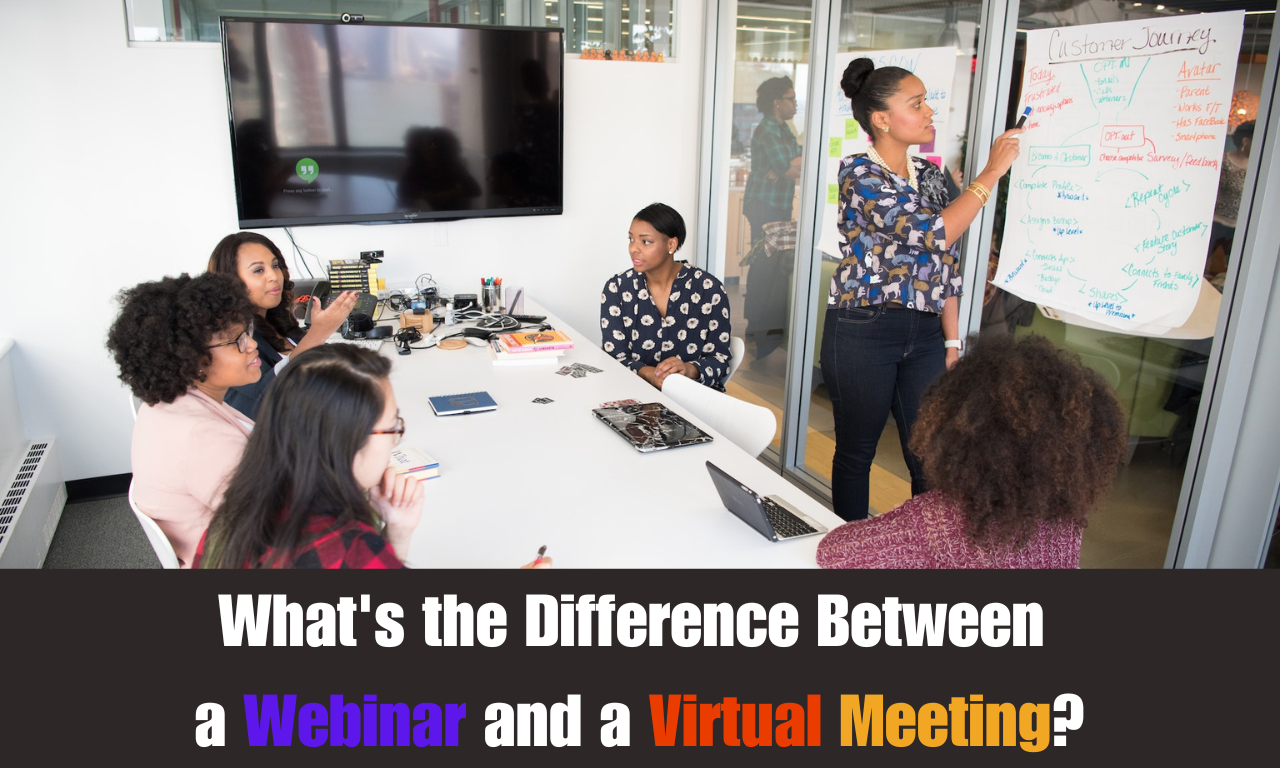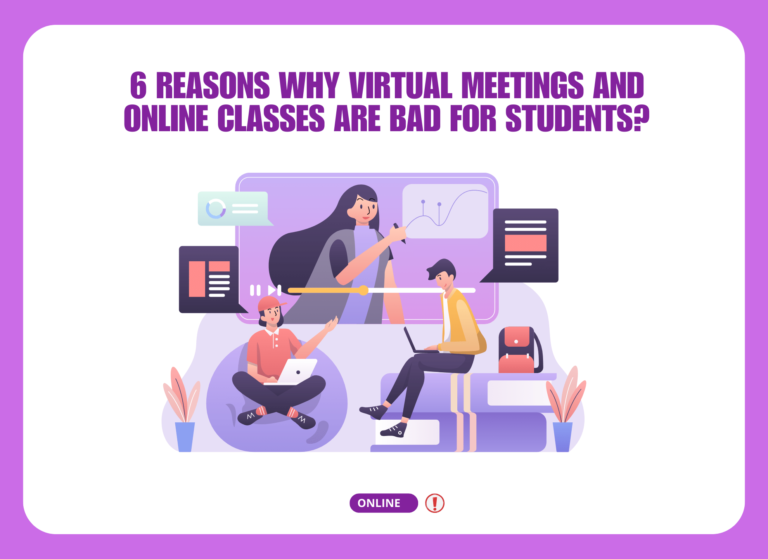
Rapid advances in technology, changes in communication trends, and global connectivity brought about by the Internet have made webinars and virtual meetings integral to many aspects of our personal, educational, and professional lives.
A webinar is a type of virtual meeting that takes place between individuals or groups at different locations, whereas a virtual meeting is a broader term that includes any type of interactive meeting or communication conducted online.
Webinars typically feature one or a few presenters delivering content to a larger audience with limited interaction. In contrast, virtual meetings encourage dynamic, collaborative discussions among fewer participants, encouraging active engagement and real-time interaction.
However, both can break down geographical barriers, allowing people from different parts of the world to connect, learn, and collaborate without the constraints of distance, which is why their popularity is increasing nowadays.
In this comparison guide, you’ll learn more about webinars and virtual meetings, along with the key differences between them and which one to consider for better communication nowadays.
So, let’s get started.
What is a Webinar?
Webinars, also known as web-based seminars, are digital seminars or presentations conducted over the Internet. It usually involves a speaker or group of speakers delivering a presentation, lecture, or workshop to an online audience.
This is commonly used for knowledge sharing, training, marketing, and communication purposes.

Webinars can cover a wide range of meetings including educational, professional, and informational topics where participants can join the webinar from different locations using their computers or mobile devices.
What is a Virtual Meeting?
A virtual meeting is a real-time interactive gathering of individuals or groups using digital communication technology.

These can be used for team collaborations, remote work, client meetings, and various types of business communication, fostering active engagement and efficient communication despite physical distance on a wide range of platforms and software.
Now let’s look on what’s the difference between a webinar and a virtual meeting.
Differences Between Webinars and Virtual Meetings
| Webinars | Virtual Meetings | |
| Purpose | Webinars are typically designed for one or a few presenters to share information, skills, or insights with a larger audience. They are often used for educational, promotional, or thought-leadership purposes. | Virtual meetings mainly focus on collaboration, discussion, decision-making, and teamwork. They allow participants to interact and communicate in a more dynamic manner. |
| Audience Size | Interaction is an essential feature of virtual meetings where participants can discuss in real-time, share ideas, collaborate on documents, and provide instant feedback. | Virtual meetings mainly focus on collaboration, discussion, decision-making, and teamwork. They allow participants to interact and communicate more dynamically. |
| Registration | Webinars often require participants to register in advance, providing their contact information, to receive access details. Additionally, in many cases, there is a requirement for a ticket fee to gain entry. | Virtual meetings may or may not require registration depending on the platform and the nature of the meeting. Platforms like Google Meet and Zoom don’t require participants to create an account to access a meeting. Most of them allow immediate access with a link or user passcode and username. |
| Interaction | Interaction in webinars is usually limited. Participants can often ask questions through chat or Q&A features, but the host can control the level of interaction. | Interaction is an essential feature of virtual meetings where participants can discuss in real-time, share ideas, collaborate on documents, and provide instant feedback privately or publicly in a group meeting. |
| Duration | Webinars are usually more time-limited and structured, with specific start and end times. They tend to be shorter in duration to fit the content of the presentation and the engagement of the audience. | Virtual meetings are flexible in duration, adapting to the needs of the participants and the topics discussed. These can be short or long, depending on the agenda. |
| Features | Webinar platforms offer features such as screen sharing, polling, Q&A, and chat to enhance the presentation and interaction between the host and participants. | Virtual meeting platforms offer features such as video conferencing, screen sharing, remote access, breakout rooms, chat, document sharing, and collaboration tools to support dynamic interactions. |
| Recording | Webinars can be recorded and shared later. This is useful for participants who could not attend live and for archival purposes. But most of the time, it is usually recorded with an external camera. | Virtual meetings can be recorded internally and externally for participants unable to attend live or for future reference. However, the main focus remains on collaborative discussion rather than content delivery. |
| Security and Privacy | Webinars can be promoted to a larger audience through registration. The purpose of promotional efforts is to attract participants interested in the topic being presented. However, Webinars are less secure than virtual meeting platforms. | Virtual meetings can be more private or restricted to invited participants, making them suitable for internal team discussions or sensitive topics, and roles can be assigned to ensure seamless team coordination and management. |
Which is a Better Choice Webinars or Virtual Meetings?
The choice between webinars and virtual meetings depends on your specific goals and the nature of the interaction you want to facilitate.
If you need to deliver a presentation, lecture, or training material to a larger audience, webinars are useful. Otherwise, for group discussions, team collaboration, brainstorming sessions, and decision-making, virtual meetings are the better choice.
Conclusion:
By understanding the unique strengths of each and the differences between different platforms, you can now confidently select the ideal mode to enhance your online interactions and achieve your communication objectives.
We’d love to hear how beneficial this guide on differentiating webinars and virtual meetings has been for you. If you found it valuable, consider sharing it with your friends, commenting to share your thoughts, and rating this article below!
If you have any questions, concerns, or suggestions regarding this guide, please feel free to contact us.
We’ll be happy to hear your thoughts, thanks.






